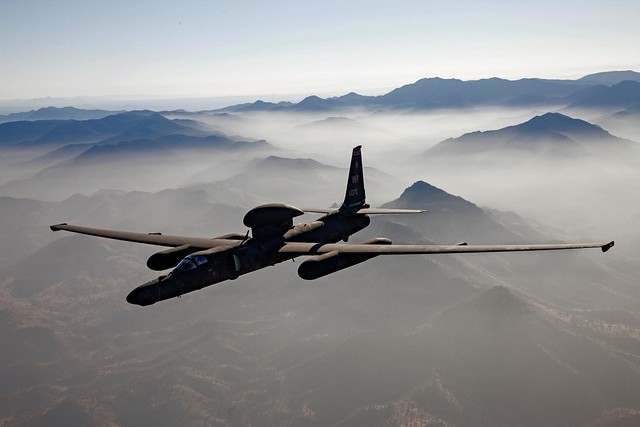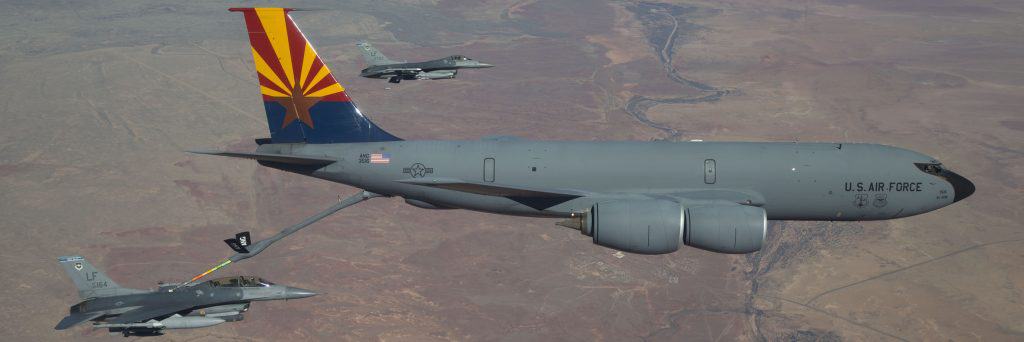Active Duty How-To: U-2 Pilot

Part of the fun of aviation is that there are many different types of aircraft that can be amazing to fly. In the 116 years of powered human flight, a few unique aircraft receive immediate recognition and inspire deep envy. The Concorde, the X-1, the SR-71. Most of these aircraft are retired, and we’ll never get the opportunity to fly them. However, the US Air Force still gives pilots the chance to fly an amazing aircraft: The Lockheed U-2S Dragon Lady.
In case you’re not familiar, the U-2 is an ultra-high altitude reconnaissance aircraft flown by the US Air Force. It’s crewed by a single pilot, riding on an ejection seat, flying long-duration missions at altitudes above 70,000 feet. The cockpit is pressurized, but the pilot still has to wear a full pressure suit (space suit). At those altitudes, if the cockpit pressurization were to suddenly fail, a pilot without a P-suit would pass out almost instantly. The U-2 carries a very wide array of equipment that can be swapped out in a matter of days. From color and IR cameras, to radar, to atmospheric sensing equipment, and many other things we can’t even discuss here, the U-2 is useful for all kinds of purposes. It’s an amazing aircraft that few humans will ever get to fly.
This post is based on interviews with several different U-2 pilots (who will all remain anonymous). My aim is to give you unique insight into the life of a U-2 pilot. For those lucky pilots who are or will be in a position to apply to fly this jet, I believe I’ve uncovered some of the most important things you can do to make yourself competitive.
This is the first article in a series where I aim to explain the special flying opportunities available in military aviation. I want to show what life is like in these jobs, and, equally as important, help you learn how to get there. If you’ve enjoyed a special flying opportunity in your career and would like others to hear about it, please let me know!
Table of Contents
- Flying the U-2
- Wearing a Spacesuit
- Flying the T-38
- The Mission
- Deployments and Professional Development
- Training
- How to be Competitive
Flying the U-2
Lest there be any doubt: Yes! Flying the U-2 is every bit as awesome as you imagine.
The U-2 is an amazing aircraft. It has the same engine as an F-16 (minus the afterburner), but a whole lot more wing. One former F-16 pilot noted that the U-2 can sustain a climb rate almost as rapid as his former fighter’s.
The Air Force admits that the U-2 flies “above 70,000 feet.” At that altitude, you’re in a tight “coffin corner”–just a few knots above stall and a few knots below Vne. There is very little room for error.
At altitude, the view really is as amazing as you think. Most of us pilots like taking pictures while we fly because it’s difficult for us to describe why we love our jobs so much with words alone. U-2 pilots love taking pictures, and it’s encouraged as long as you aren’t in a critical phase of flight, and you make sure that there isn’t anything classified in the frame.
The featured image for this post was graciously provided by Extreme Ross, a former U-2 pilot and very talented photographer. If you like this image, be sure to visit his website and check out his work! You can order many of his amazing shots at sizes large enough to do justice to any hangar, meeting room, or man/woman cave. For regular updates, be sure to like his Facebook page as well!
The Air Force even likes his work enough that they made sure he was in the air during the Total Solar Eclipse a couple of years ago. You should see his famous picture here. Although the AF encourages photography, you’re not allowed to make it into a business while you’re on Active Duty. (This delayed the launch of Extreme’s website.)
As challenging as it can be to fly the U-2 at altitude, the real test of a pilot’s mettle is landing. The jet’s 105 feet of wing are so efficient that you must stall it to land. However, if you stall too high, you’ll damage a critical national asset for which spare parts can be difficult to find. You don’t want the attention that comes with breaking the jet on landing.
Unfortunately, the aircraft’s unique landing gear and seating configuration, coupled with its Pinocchio-length nose, prevent you from seeing the runway in front of you. Instead, another pilot follows you down the runway in a high-performance chase car, using a radio to tell you how many feet you are above the runway. (And if you think this sounds tough under normal circumstances, wait until you have to practice a no-flap landing on a day with calm winds!)
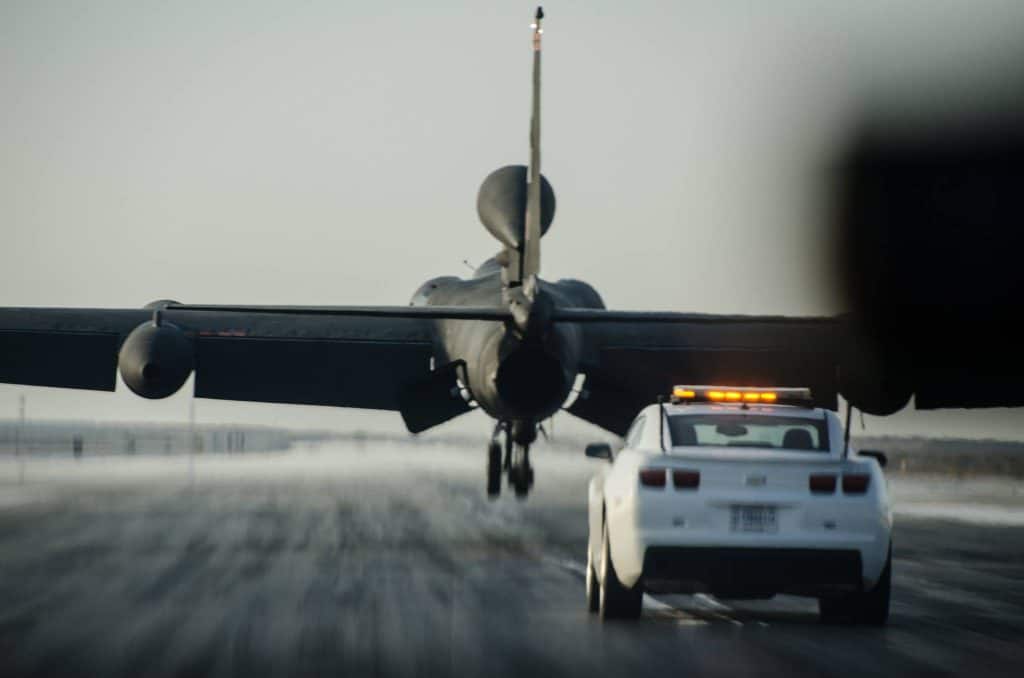
One of the reasons that the U-2 community can be so picky in its selection process is that it can’t afford to waste resources on someone who isn’t an amazing pilot. We’ll see later that they also want people with good references, but no amount of being a “good dude/dudette” can make up for being bad in the jet. You may think that since it’s a single-seat aircraft you can get by if you’re weak in a couple of areas, but that’s not the case. If you’re not cutting it, people will know.
Wearing a Spacesuit
In the words of one pilot, the U-2 is a human factors nightmare. Imagine trying to fly an airplane and flip switches wearing a set of oven mitts. Imagine trying to use a touchscreen iPad with those mitts on. (The answer is a stylus. Some people bring 2 of them so they can pinch-zoom.) Imagine trying to hunt down a circuit breaker behind your hips when you’re strapped into an ejection seat and your helmet won’t turn past the 10 & 2 o’clock positions.
If you drop something, it’s a significant emotional event. You carry a snake-in-a-can device with a spring-loaded claw on the end to retrieve dropped items, but the only way to fit this device in your pocket is to curl it up. Yes, it tries to vacate your pocket, forcefully, while you’re flying well above FL700, the moment you open that pocket.
No matter what, you will feel “like a bag of ass” after flying a real-world mission.
The Aircrew Flight Equipment specialists who fit you for and maintain your suit are great at their job. If something doesn’t fit, don’t play “I have a secret” and try to tough things out. They take intense professional pride in doing whatever it takes to make sure you can accomplish the mission without the distractions of poorly-adjusted equipment. Some people don’t love wearing the suit, but as long as it’s adjusted properly it can be comfortable for a full 10+ hour mission.
Any time a group of U-2 pilots is hanging out, it is 100% guaranteed that their conversation will include a discussion of how not to take a duce while flying the Duce. (Flying this jet is a no-failure mission in more than one way.) You can, at least, get rid of excess water while flying. You wear what amounts to a condom with a tube on the end. That tubing runs down along your leg to a hole near the bottom of your suit and from there to a bag for storage. The system usually works correctly, but it’s always a terrifying moment the first time you have to use it early in a long mission. The existential question for all U-2 pilots at that point is: “Did I fall out?” There is no greater relief for a U-2 pilot than noting the flow of liquid into the reservoir after risking it all that first time each flight.
If all of this sounds like a nightmare to you, then you should definitely not apply to fly this aircraft. You can’t be part of this fascinating mission without the human factors considerations. Personally, I think this all sounds like a unique aviation challenge, and I’d choose to tackle it in a heartbeat.
Flying the T-38
Since the U-2 is such a rare and precious asset, there just aren’t enough of them to give all the pilots as much flying as they need to stay current. The Air Force makes up the difference by giving U-2 pilots a great deal–it maintains a small fleet of T-38s for them to fly.
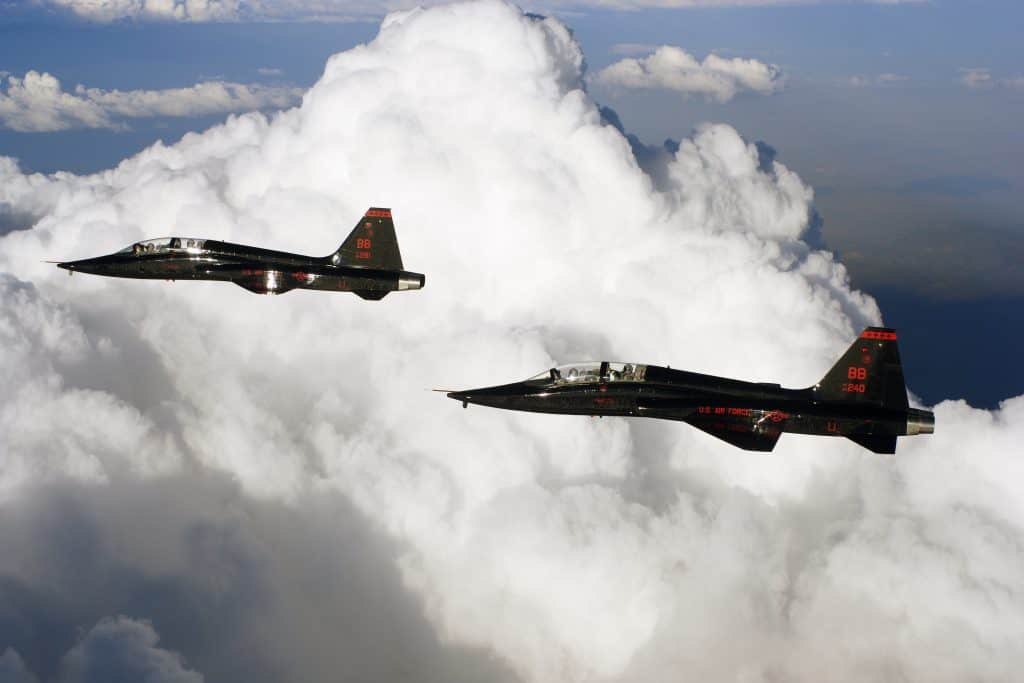
The T-38 is a fantastic aircraft. It’s straightforward, fast, maneuverable, and fun. The goal is for a pilot to fly the T-38 between two and six times a month, and the U-2 one to two times. For military aviation, I’d say this is a pretty great balance.
In addition to flying the T-38 at work during the week, U-2 pilots are welcome to take jets out on cross-country trips over the weekend. This is a dream come true for young/single pilots, but even the married ones are known to take an epic trip or two every year.
The Mission
A few years ago, some genius bean-counters decided to get rid of the U-2 and replace it with the RQ-4 Global Hawk. After everyone with some modicum of perspective chimed in, Congress and the Air Force realized how stupid that idea had been and decided to keep the U-2 around after all. Thankfully, the Air Force’s most recent position is that both the U-2 and the RQ-4 are important. We need both to accomplish our mission.
The U-2 requires competent pilots who are great at flying because it is a single-seat aircraft that flies highly visible missions. Mission control has the capability to communicate with you through HF radio and “other means,” but for the most part, they do you the courtesy of leaving you alone and letting you do your job. Essentially your sensors and other equipment are controlled from the ground, and all you have to do is fly your assigned course. However, one of the U-2’s unique and critical capabilities is the fact that you are flexible.
If mission control notices something on one of your sensors and wants another pass, they call you and ask for it. As the pilot, you maintain constant situational awareness on your fuel state. If you can spare the gas, you can immediately adjust course and give the people what they want. It seems crazy, but this kind of flexibility is simply beyond the capabilities of the RQ-4 that is controlled more by typing commands into a computer than driving with a joystick. Also, the Global Hawk can’t fly through weather.
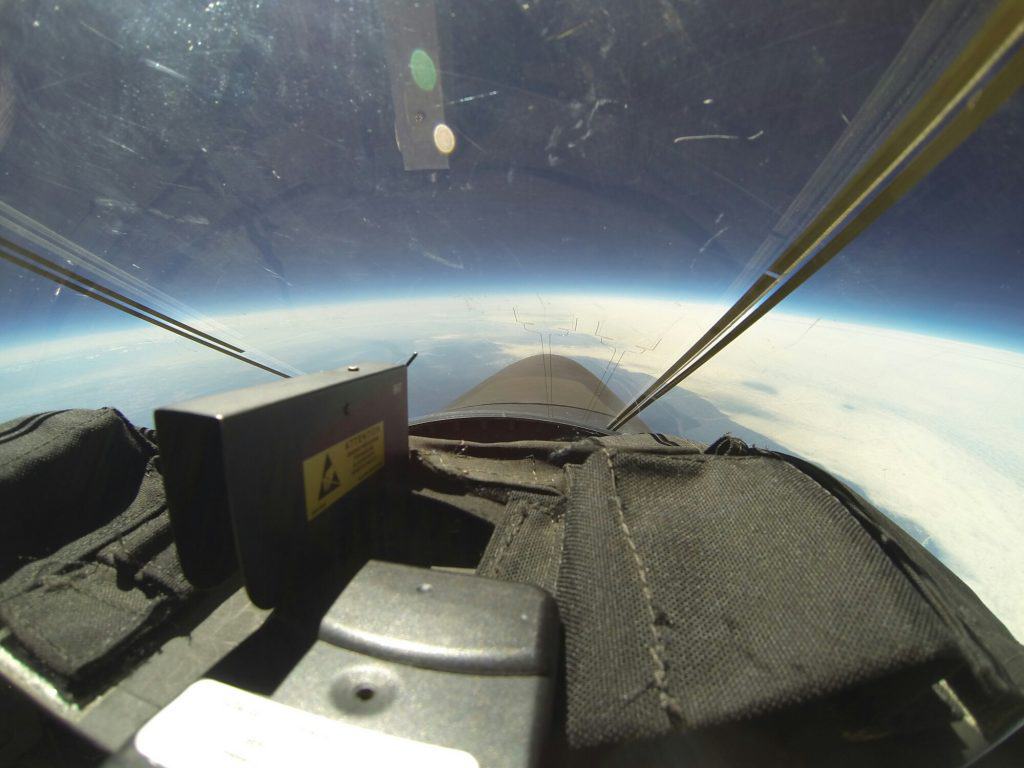
The U-2 community is supremely focused on accomplishing their mission. There have only ever been about 1000 U-2 pilots in human history. There are only about 70 on active duty at any given time, and subtracting out those on staff tours or in other assignments, there are only 30-40 pilots ever actively flying the jet.
Since this community is so small, they focus on flying and the mission above all else. They’ve hired civilians, enlisted Airmen, or reservists to deal with the day-to-day administrative queep associated with an Air Force flying unit. This frees pilots to study, fly, or spend time with their families between deployments. This is, sadly, a unique environment among Air Force flying squadrons. It sounds to me like what I always expected a flying squadron would be like, and I can imagine that any of us would be happy to operate in such an environment.
Deployments and Professional Development
Qualification training for the U-2 takes 8-12 months, and a U-2 pilot should expect to go on a 60-75 day deployment as soon as that is complete. That first deployment will be followed by a roughly equal amount of time back home, then right back out on a second deployment.
After that, it’s not uncommon for a pilot to complete Instructor Pilot Upgrade (IPUG). This only makes you a “single-seat” IP meaning you can teach lessons on the ground or renew a pilot’s landing clearance from the driver’s seat of a chase car. (There is a separate qualification for teaching in the 2-seat TU-2.)
From that point, a pilot should expect to go on 1-2 deployments each year. However, this ebbs and flows depending on what’s happening in the world.
The U-2 deploys as very small units. The commander at a deployed location is considered “permanent party” on a 1-year assignment. That person will be in charge of five or fewer pilots at that location. The tight-knit nature of these detachments means that it’s extremely important for everyone to get along. One jerk in the group can ruin morale for everyone. This is why the community relies so heavily on referrals. Thankfully, the community has been successful at hiring great people, and being deployed like this typically generates a great environment.
Although they’ll take a more senior pilot who is a great fit, this community likes hiring younger officers because it has the capability to override Air Force Personnel Center (AFPC) and hang on to people for a solid six years. Eventually, U-2 pilots will have to jump through school and staff hoops just like other Air Force officers. However, as long as you did a good job for the community, you stand a good chance of getting back when it comes time to return to a flying job, and/or take a job as a commander.
The community is in the process of standing up a U-2 program associated with the Air Force Weapons School. This will be a unique and challenging program, and a great way to stay actively flying in the community for longer if you so desire. This process is just getting started, so nobody knows exactly how it will work or what the significance of a Weapons School patch will be within the community. If you’re not already there, it will probably be an opportunity for you though.
It’s also possible to stay in the community as a reservist. Unfortunately, U-2 reservists don’t fly, but you can at least live in the area and stay involved with the mission and the people while you continue your service.
Training
The maximum capacity of the U-2 training pipeline is about 18-22 pilots per year. This means that each training class is tiny–just 2-3 pilots each.
You’ll start by getting qualified in the T-38 before moving on to the U-2 itself. Oh the humanity, right? You fly 2-seat TU-2s at first, and your first solo flight is a big day. The entire community shows up for solo parties which are held once per class, or occasionally for two classes at the same time. After solo, a pilot still has 8 rides (about 2 months worth) to complete his or her mission qualification. Like the U-2 deployment schedule, the pace of training depends on real-world events. In general, a pilot could plan on spending 8-12 months in the pipeline. Back when the Air Force had announced that it was going to retire the U-2, manufacturers stopped making spare parts for a while. As you might imagine, U-2 parts are very unique and you can’t just substitute by using parts from other aircraft. This led to significant training delays. A few years ago, a tragic crash killed Lt Col Ira Eadie and destroyed one of the five 2-seat TU-2s in existence. This also impacted the community’s training timelines.
Since the U-2 community has the luxury of selecting highly skilled and experienced pilots, they don’t need to play any of the silly “eat your young” games for which some communities are known. U-2 students are expected to study hard and meet standards, but the environment is relaxed compared to most.
Although the interview process is very rigorous, the community has no compunction about sending pilots away if they aren’t making the cut. There simply aren’t enough resources to carry a weak pilot and it’s not unheard of for someone in the training pipeline to simply be asked to leave.
We’ve looked at the flying, the mission, and the training. There is no doubt that the U-2 is an awesome opportunity. If you’re like me, the question that has been burning through your chest this whole time is: “Okay Emet, how do I get there?” Let’s take a look.
How to be Competitive
I’m not going to list the basic requirements for applying to be a U-2 pilot. You can find them on the Air Force Portal. If you want to make it through the interview process, you need to have the initiative to at least look this up yourself.
Meeting these requirements is not enough though. For every five applications that the U-2 community receives, they only invite one or two people to interview. Of those who get an interview, only two out of three get hired on average. You need to do everything you can to exceed these minimums.
Air Combat Command is so desperate for fighter pilots that they’re unlikely to give up any pilots to fly the U-2 any time soon. However, if a fighter pilot is applying, he or she should be at least a 4-ship flight lead, if not an IP. A non-fighter pilot definitely needs to be an IP, and any type of pilot would be better off applying as an Evaluator. You need a minimum of 1000 hours, but you should try to exceed that number.
The U-2 is happy to accept FAIPs (First Assignment Instructor Pilots). A FAIP applicant should try to collect as many advanced qualifications as possible: 4-ship flight lead, Functional Check Flight (FCF) pilot, Advanced Handling Characteristics (AHC) pilot, etc.
I asked my U-2 buddies about the things the Air Force seems to care about for every other special opportunity: Professional Military Education (PME) and a Master’s degree. The response was an emphatic “No!” Flying the U-2 requires superior flying skills and airmanship. PME and advanced degrees do not generally contribute to those qualities, so they add little if any value to your application. One U-2 pilot got hired having not completed SOS (the Air Force’s O-3 level PME). One pilot had a Master’s degree, but felt that it had done absolutely nothing to strengthen his application.
Make no mistake: the U-2 community wants valuable flying experience, not BS queep.
While flying ability is a primary consideration in the application process, attitude is almost equally as important. A U-2 pilot is one of 30-40 people flying this aircraft at any given time. There are only a handful in the whole Air Force. If you screw something up, it gets noticed all the way up at the tippy-top of the chain of command. Also, being such a small community, one bad egg can make life miserable for everyone.
Due to the necessity of screening for attitude, existing U-2 pilots have significant input on who gets hired. Simply put, you will not be invited for an interview unless someone inside the community can speak for you. When the U-2 recruiter gets a batch of applications, he or she places them on a table and sends out notice for everyone to stop by and review the names. If someone knows you and thinks your attitude is a good fit, he or she will leave a note. If someone know you to be a bad fit, there’s a good chance your dreams will end right here. (Moral of that story: don’t be a jerk.)
Don’t panic if you don’t know anyone there right now. They won’t necessarily throw your application in the garbage just because nobody recognizes your name. If you’re otherwise competitive, they may just hang on to it until they can find someone who does know you. If I thought I was in this bucket, I’d start doing some serious networking. Although this is a relatively small community within the military, you’d be surprised at how far U-2 pilots spread out on subsequent assignments. There’s probably a way for you to meet someone in the Air Force, and get to know him or her well enough to earn an endorsement (or veto). In addition I’d strongly consider joining The Pilot Network and searching to see if you share common geography and/or interests with any of the U-2 pilots there.
Naturally, the more existing U-2 pilots who pop in and add their support for you, the better your chances of getting an invite. It’s not uncommon to know people who used to fly the U-2, but don’t fly it right now. If all else fails, don’t hesitate to reach out to someone like this. The community is small enough that an endorsement from a past U-2 pilot still holds weight.
This aspect of your application is so important that the guidance I got was you should absolutely not just submit an application out of the blue. You first need to identify one or more people in the community that you know and discuss the idea of applying. If they give you the impression that they’d recommend your application, then have them put you in touch with the recruiter. It’s fine to have your application package mostly filled-out already, but you need to wait until the introduction has been made to submit it.
If your qualifications and experience make you competitive, and current U-2 pilots have vouched for your attitude, you may be lucky enough to receive TDY orders to go to Beale to interview.
The interview takes a few days. There are two squadrons at Beale and you’ll interview with the commanders and operations officers from both. The Operations Group commander may also be at your interview. One U-2 pilot recommended that you demonstrate your initiative and motivation by showing up knowing as much about the U-2 as possible. The U-2’s Tactics, Techniques, and Procedures manual, the 3-1, is available on SIPRnet. Any Air Force pilot with a Secret security clearance should be able to get access to it. If you’re at a base without SIPR access, you should at least read as much open-source information you can find about it on the internet.
I’ll start you out with a couple interesting facts:
- None of the original U-2s from the Gary Powers era are flying today. The current U-2S model is a completely different airframe. The fact that this model looks anything like the original is somewhat coincidental.
- A “slick” U-2 is only worth about $40M. Its mission systems are highly modular and most of them were designed specifically for this platform. This makes each one rare and extremely expensive. It takes several days to convert from a slick aircraft to a mission configuration. The end result is an aircraft worth upwards of $400M! (Yet again, can you understand why they’re so picky about their hiring process?)
If you make it through the full interview process you’ll get to fly the jet three times (including landing it!). You’ll hang out with the rest of the squadron. You’ll put on the spacesuit and sit in a corner for an hour to make sure you don’t unexpectedly freak out. (It sure sounds like more fun than an airline pilot interview.)
As I’ve mentioned, there is no squeaking through this program. If at any point it’s decided that you’re not making the cut, they’ll simply thank you for your time and send you home. No, they don’t have to explain themselves to you.
With most special programs like this, getting hired is only half the battle. The next step would be getting the personnelists from your old community to “release” you to the special program. Thankfully, the U-2 doesn’t have that problem. Your Wing Commander will have to agree to send your application in the first place, but once the U-2 decides they want you, they get you. They simply tell AFPC what to do and it happens.
Conclusion
The U-2 is an amazing aircraft, and flying it is a special opportunity that any of us would be lucky to get. As if the U-2 isn’t awesome enough, its pilots also get to fly the T-38 to stay proficient. Despite some political turbulence, the U-2 is here to stay and it’s a fantastic career opportunity for a pilot who loves flying. If you want to apply, start by making sure you’re as qualified and experienced as possible in your current aircraft. Simultaneously, reach out and find at least one person you know who is or has been part of the U-2 community. When you’re ready to apply, have that pilot get you in touch with the U-2 recruiter before submitting your application.
If you’re lucky enough to get invited for an interview, do your homework. Show up excited, ready to be part of a tight-knit team and with your flying skills honed. We wish you luck with your application. If you get hired, we’ll be eternally jealous that you get to be part of such an elite community. We wish you blue (and better yet black) skies. Don’t forget to take some pictures for us.
Speaking of pictures, thanks again to Extreme Ross for providing us with a gorgeous feature image for this article. Here’s a link to the full-resolution version of the image he provided: https://bogidope.com/wp-content/uploads/2019/07/NL-Pano-Cockpit-and-Outside.jpg. If you haven’t already, go drool over the rest of his work on his website! The forward-looking cockpit shot was provided by one of my anonymous interviewees. The awesome shot of the U-2 landing with chase a car was taken by SSgt Colton Elliot and posted at https://www.af.mil/News/Photos/igphoto/2001851002/. The photo of Beale AFB T-38s was posted as a “courtesy photo” at https://media.defense.gov/2012/Dec/05/2000091837/-1/-1/0/121205-F-XX999-002.JPG. The image of a U-2 in flight came from Lockheed Martin’s U-2 Flickr page, which I found on their fascinating U-2 information website.
Thanks to the anonymous U-2 pilots who provided all this unique insight. Let me know when you start accepting new-hire reservists and I’ll get you my app right away!



